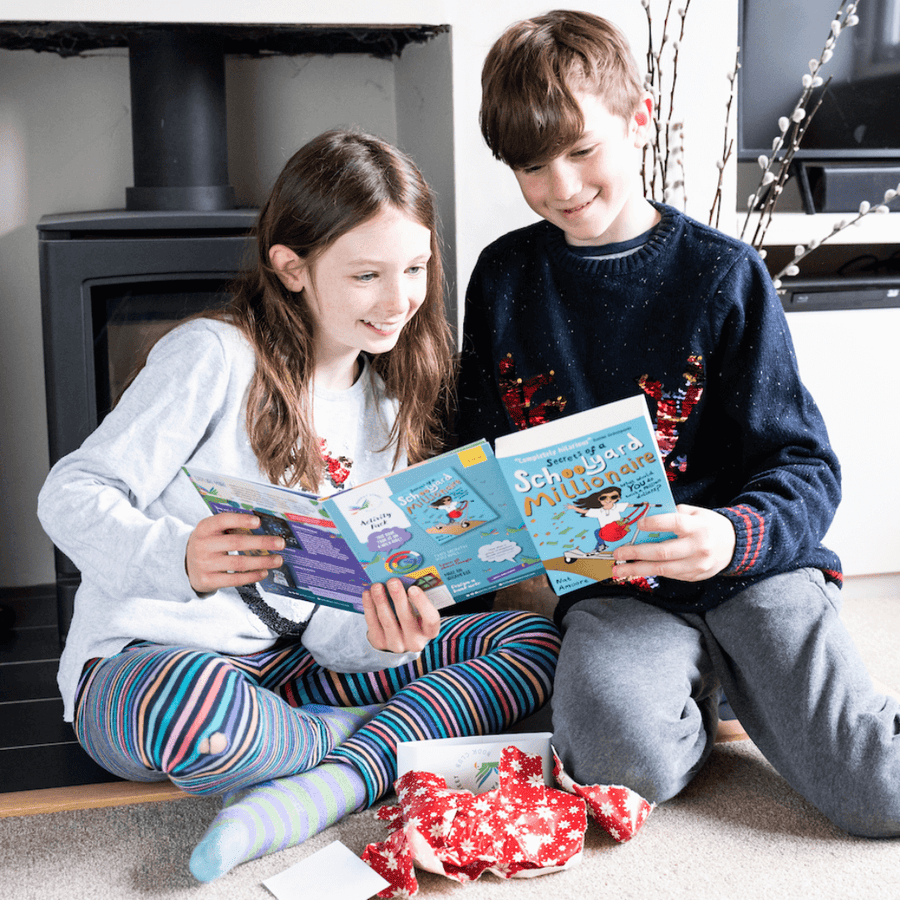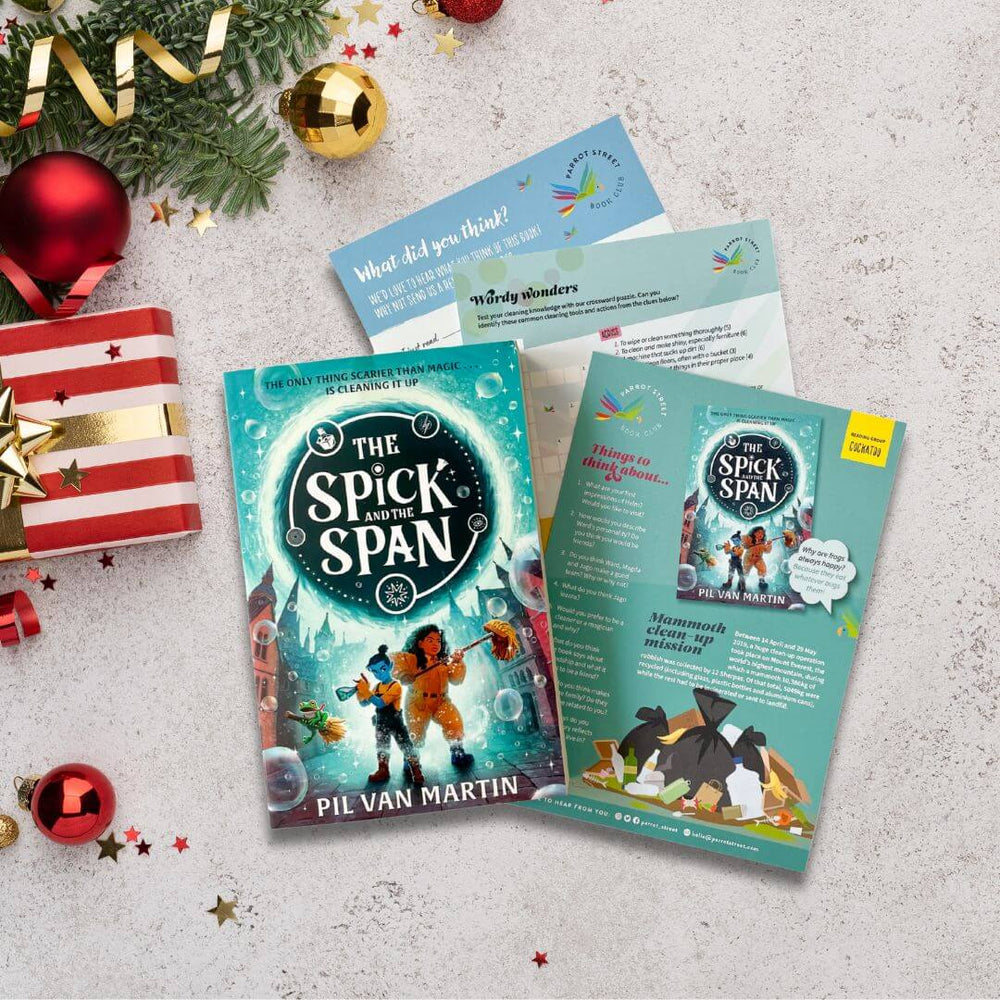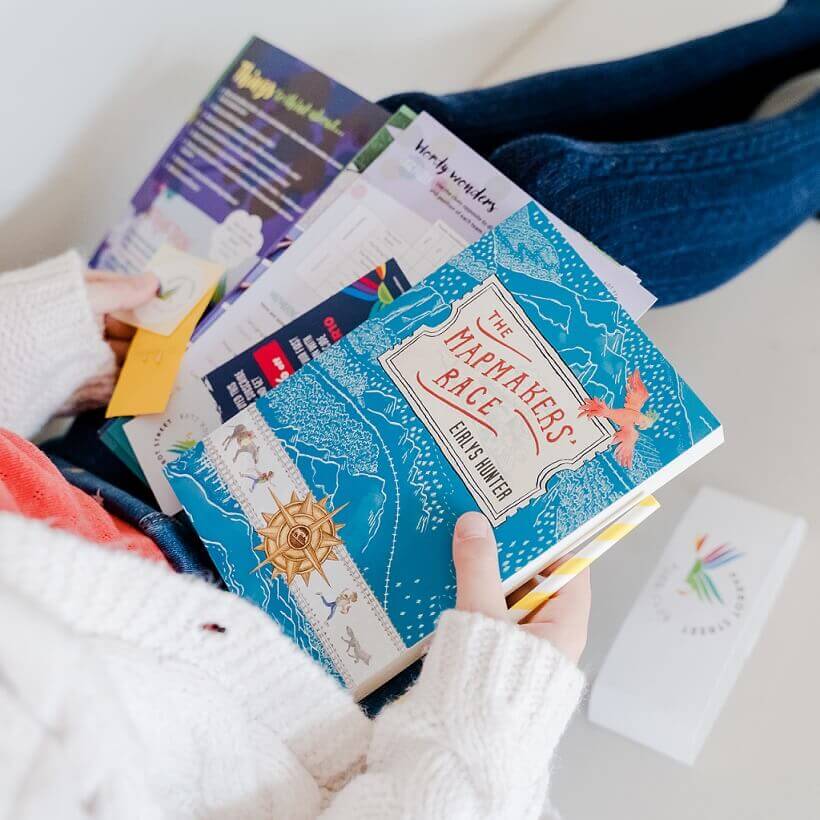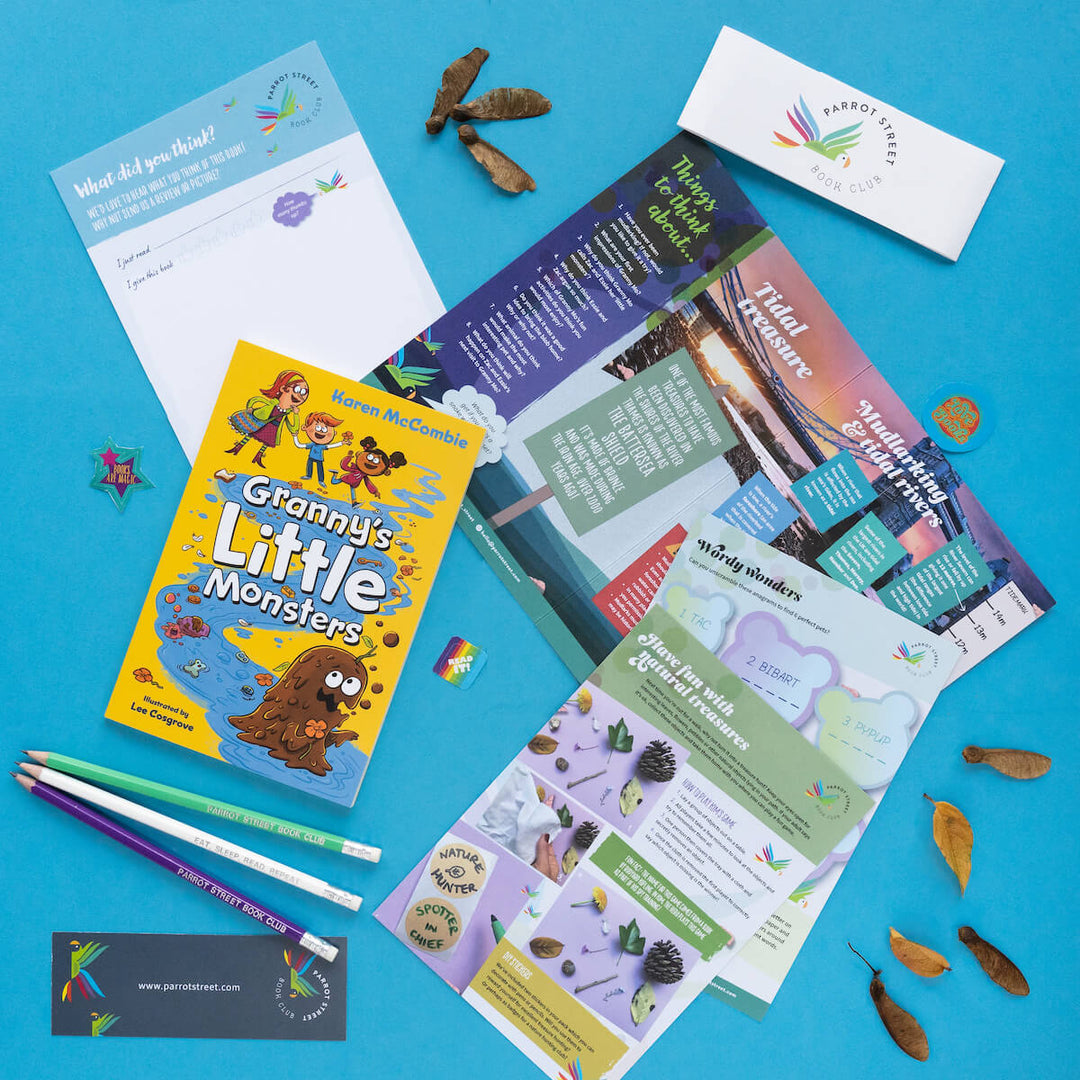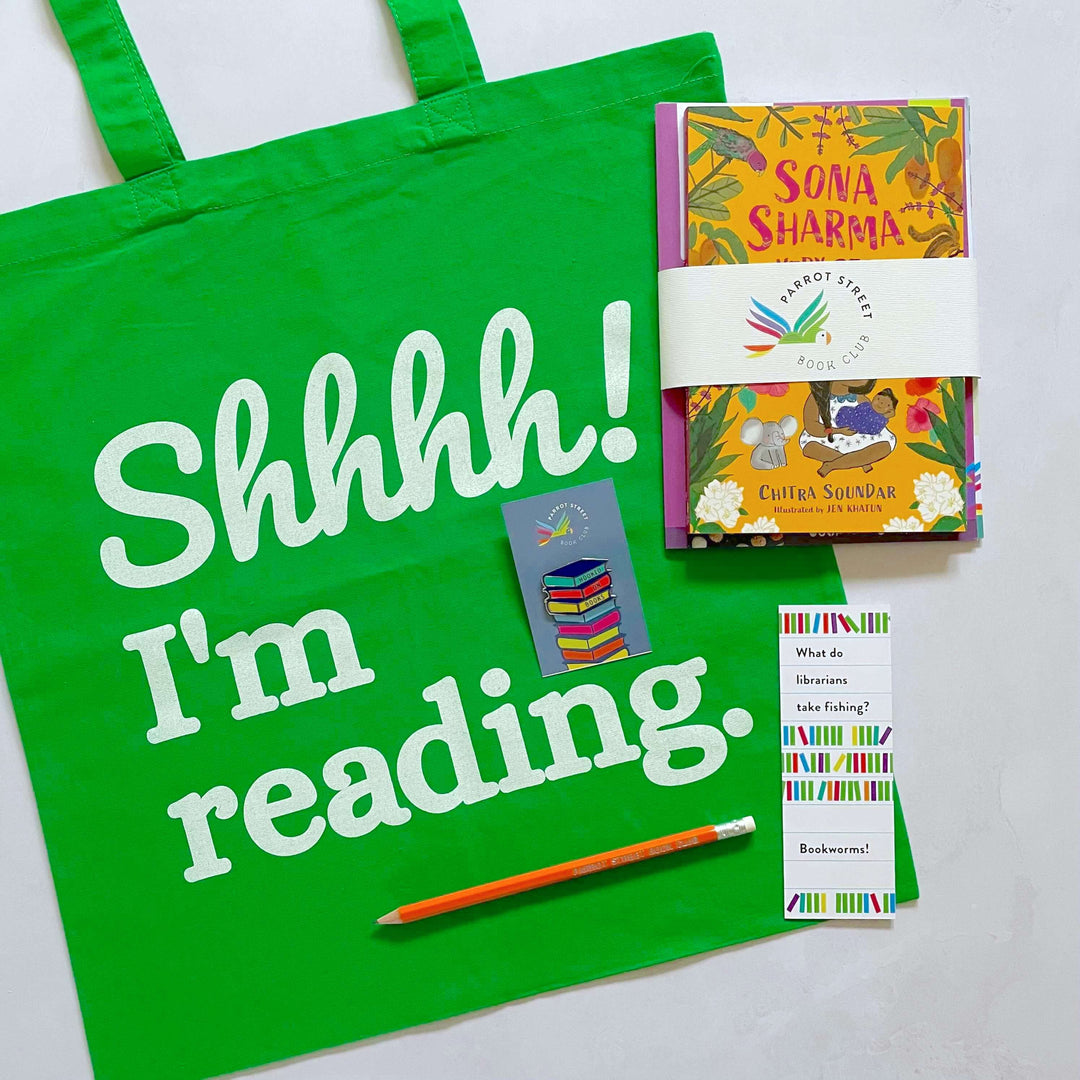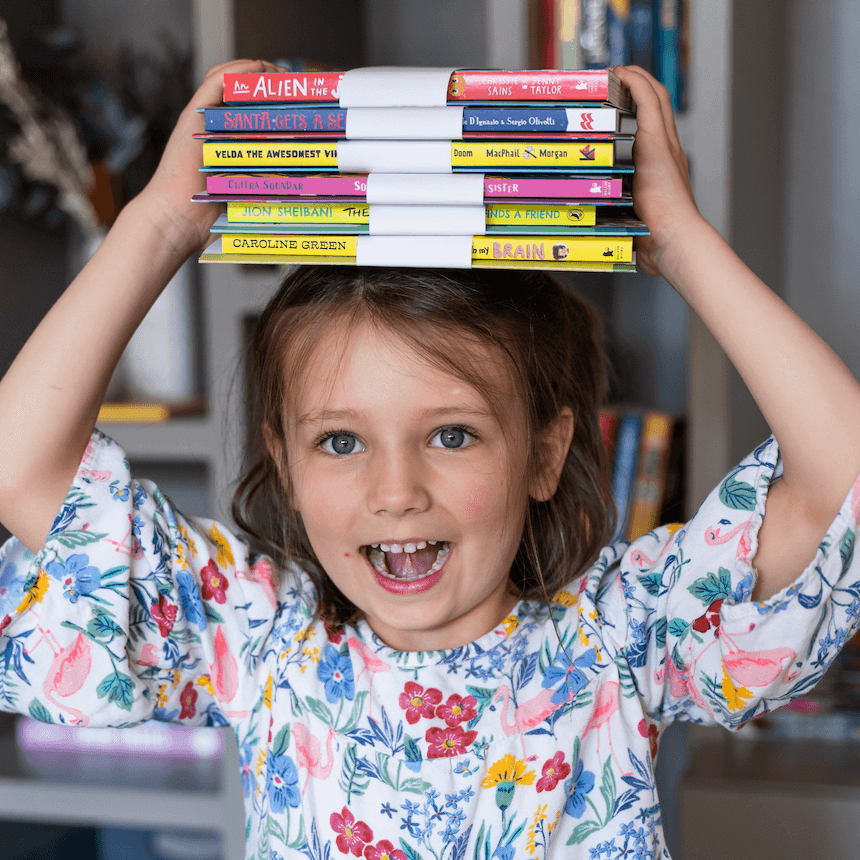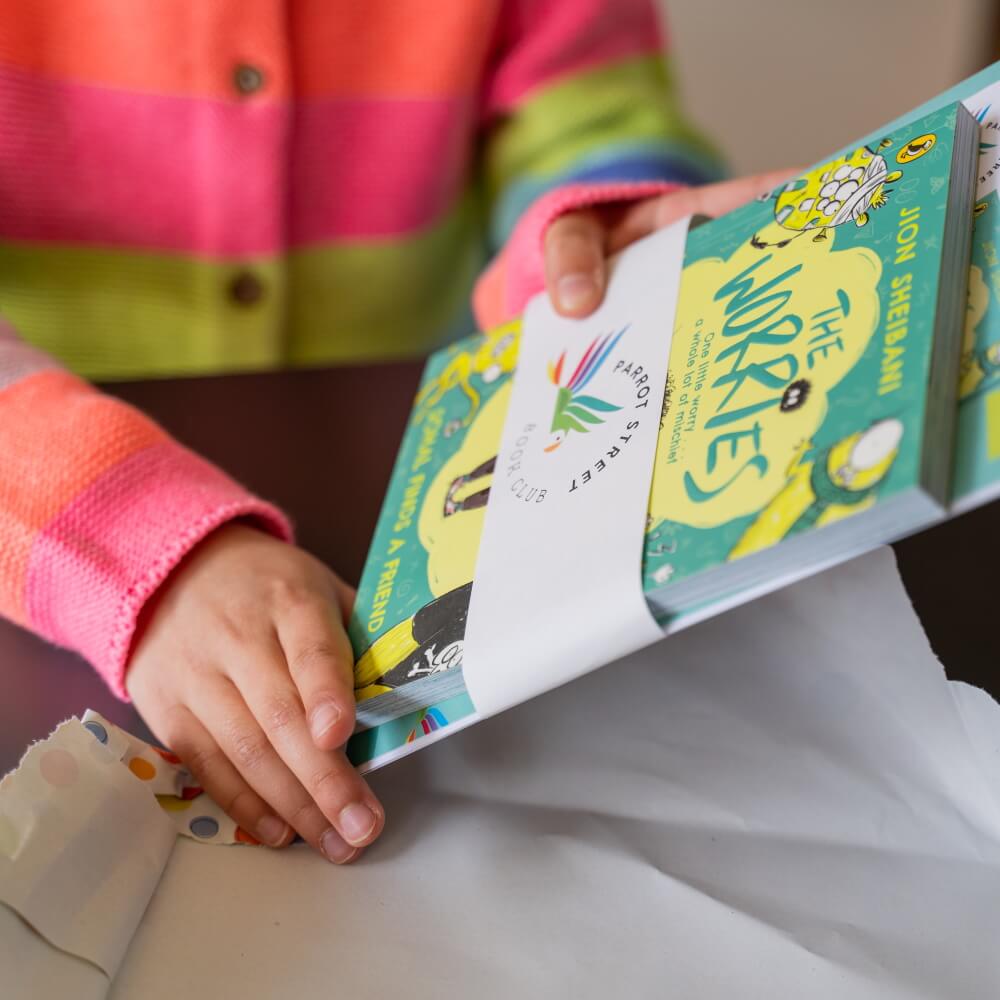Lou Kuenzler on Our Beautiful Game and her favourite historical books for kids

The book we sent our Cockatoo subscribers this month is a moving historical story, set during the First World War and inspired by the incredible real-life story of trailblazing women’s footballer Lily Parr and her peers. It’s dramatic and surprisingly relatable, and we absolutely love Polly, the book’s unstoppable heroine. Here we ask the book’s author, Lou Kuenzler, to tell us more about what inspired the book and which historical books for kids she would recommend you read next.
What inspired you to write Our Beautiful Game?
I was listening to the radio one day when I heard a fascinating piece about how women’s football experienced a golden era at the time of the First World War. The conflict meant, whilst the men were away fighting, women and girls came together to work in munitions factories to make weapons and machinery. Many young working-class girls would previously have been employed in lonely positions as servants in big houses with very little free time. War work offered an exciting opportunity to come together with other young women in lively groups and share their breaks in the factory forecourts – a bit like a playground at school. Crucially for our story, they were wearing trousers for the first time too. It is much easier to kick a ball in a pair of those than in a long, floor-length skirt! Playing football started as a bit of fun; but the women’s game soon flourished, drawing huge crowds up and down the country. Then that success became a problem . . .
Enthusiasm for the women’s game was so great that when the war was over the male-led Football Association was scared that female matches would ‘steal’ fans away from the men’s game. Driven by this fear, they put a ban in place, exactly a hundred years ago, in 1921. The ban prevented all women’s matches from being played on FA pitches or with any FA officials acting as referees and linesmen. These measures put an instant strangle-hold on the development of women’s football and were only finally fully lifted in 1971. That’s fifty years of holding women back!
As I listened to the radio, I was shocked. I could not believe it was the first time that I had heard about this prejudice against women playing football. It seemed so unfair, yet made me even more proud of players like the Lionesses today. I realised how young many of those early players would have been and knew at once that their story needed to be told as a children’s book.
How did you go about researching the book?
I read absolutely everything I could about women’s football at the time of the First World War. There is also some wonderful early cinema footage of the teams which really captures the joy of the game. I was also interested in what it would have been like to work in a munitions factory making weapons and bombs. These factories were very dangerous places, with horrific accidents from heavy machinery. Some of the workers were known as ‘canaries’ because their skin turned bright yellow from the poisonous chemicals they were exposed to and there were frequent explosions too. Due to these high risks, I assumed that all the young women working there would be over the age of eighteen. One day however, I read an account of a factory inspection which was a crucial turning point in my research. I discovered that it was not unusual for girls as young as eleven to be employed in these dangerous factories. From that moment my story took on a whole new slant. I was not just exploring life on the football pitch, but in the factories too.
Are any of the characters based on real people?
My central character, Polly Nabb, is quite closely based on the talented, left-footed striker Lily Parr. Possibly the most successful female footballer of all time, Lily was only fourteen when she started to play professionally. Like my character Polly, Lily was shy and out-spoken, often awkward in company and happiest when out on the pitch. These characteristics made a wonderful framework to build upon. Yet I did not want to make my character an exact replica of the famous goal-scoring Lily. I wanted to draw on stories I had heard of other young players as well. By inventing the character of Polly, I was able to allow my imagination to create meetings, conversations, events and – most crucially of all – friendships which shape her story not only as a player but as a young girl too.
What do you think would have happened to Polly if she hadn’t taken the job in the factory?
If Polly had not got the job at the factory, I think she would probably have been employed as a scullery maid in a fancy house up on the hill. This would mean being shut away for hours in a dark little room peeling potatoes and scrubbing pans. I have a feeling she would not have lasted long . . . She might have been given the sack for answering back – or perhaps dropped a big pile of precious dinner plates. Whatever happened, Polly would definitely have snuck away to play football (even if it was only with an old turnip from the larder). I expect, somehow or other, her passion for playing would have caused trouble!
Do you have a favourite place to write?
I can write pretty much anywhere and love to go to cafes and libraries to get out of the house sometimes. I am very lucky though that I can sit in front of my window at the lovely big, old, red desk which I bought in a junk shop years ago. I am perhaps happiest of all writing there with my two cats sitting beside the computer and my dog snoozing on my feet (and a cup of tea, of course).
Why did you choose to write books for children?
I love writing books for children because I think young readers have the best imaginations. In children’s fiction anything is possible. That is such an exciting challenge. Every new book offers the chance for the story to be familiar or strange, sad or funny – or all of those things together – but always fresh, unexpected and exciting to write. I think children read with all of their senses bristling . . . Who could wish for a better audience than that?
What was your favourite book as a child?
I am extremely dyslexic which means, even now, words jump about and do not always behave on the page. It took me a very long time to become a keen reader. Once I did, there was no stopping me. I was lucky that I had some brilliant teachers (including the amazing Mrs Moore!) who reminded me that just because my brain worked slightly differently than other people’s, it did not mean that I could not let my imagination run wild. In fact, seeing the world in an ever-so slightly different way can be a great help both for reading and writing stories!
One of my favourite books was Cue For Treason by Geoffrey Trease. It is about a boy who gets into trouble and has to flee from home. He joins Shakespeare’s travelling theatre troupe and makes friends with a secretive young actor named Kit. Before long they are plunged deep into a life and death mystery which only they can solve. As soon as I knew I was going to write a historical novel with Our Beautiful Game, I re-read Cue For Treason in one sitting. Although it is set in a very different period of history from my story, I wanted to remember how it felt as a reader to be led back into another world where the characters live in a way which is so far-removed from children today. Geoffrey Trease does this brilliantly. I can still remember wanting to leap into the book and join Shakespeare’s actors too.
Which historical fiction books for children would you recommend our subscribers read next?
Gosh! What an impossible question! There are so many brilliant historical books for young readers – including Cue For Treason by Geoffrey Trease which is still in print. What I have really been thinking about with Our Beautiful Game is stories which are set in a time of conflict. As such, I would recommend the following three:
War Horse by Michael Morpurgo.
I know many, many young readers will already be familiar with this title. Yet, as somebody who has just been writing about the First World War, I feel it is a book everybody should read to help understand this terrible time in history. Morpurgo’s choice to show the devastating conflict through the eyes of a horse is a brilliant one. It allows us to see the horrors of man-made war without the petty barriers of nationalism or politics. Through the horse’s eyes we see the sadness and suffering; but also great loyalty, love and friendship too.
The Runaways by Holly Webb
Following on from the First World War, this wonderful historical story is set in World War Two. This time, the focus is very much from a child’s point of view. Londoner Molly is living with the terrifying bombardments of the Blitz. Then she is evacuated and sent away to the safety of the countryside . . . but safe does not mean easy, and she still has explosive and difficult family relationships to make sense of back home. As we might expect from one of Holly Webb’s books, there is a brilliantly imagined animal at the centre of the story. Molly’s beloved dog Bertie ups the stakes at every turn.
The Somerset Tsunami by Emma Carroll
My final recommendation is not centred around a time of war, but a natural disaster instead. Here, the conflict is an environmental one. Set in 1616, a girl named Fortune Sharpe is caught up in a huge wave which floods the land. In a time of little scientific understanding, magic and witchcraft are blamed for these strange events. The story may be set over four hundred years ago, but Emma Carroll’s focus on environmental issues seems of greater importance than ever today. Through the lens of history we can ask questions and explore attitudes in fresh ways. Above all, who would not want to read about a character as magnificently named as Fortune Sharpe, with a strange mysterious history of all of her own?
Like the sound of Our Beautiful Game? Copies of this month's pack, including a copy of the book and our bespoke activity pack to accompany it, are now available to purchase individually here - but only while stocks last!
This post includes affiliate links to our bookshop.org page, meaning we receive a small percentage of the sale should you purchase through them. Additionally, a percentage from all sales on the platform goes directly to local UK bookshops which is an initiative we're delighted to support!
JOIN OUR EMAIL LIST
Children's book news straight to your inbox
We love sharing product updates, book recommendations, children's activity ideas and special offers via email.



